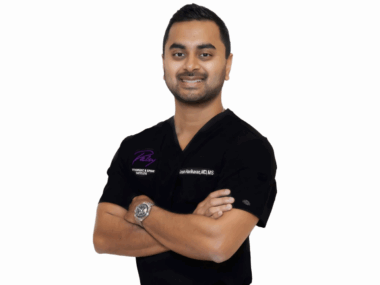Growth-friendly scoliosis surgery found safe, effective in SMA type 1
Procedure has been used with success in SMA type 2 patients
Written by |

A type of surgery to correct scoliosis, a spine deformity, was found to be generally safe and effective in young people with spinal muscular atrophy (SMA) type 1, a small study shows.
Called growth friendly instrumentation, the procedure had been well established for people with SMA type 2, but has not been studied as much in the more severe type 1 disease.
“We report that early-onset spinal deformity in this population can be safely treated with growth-friendly instrumentation, with similar early complication rates and deformity control ability when compared with SMA type 2,” the researchers wrote in “Safety and efficacy of growth-friendly instrumentation for early-onset scoliosis in patients with spinal muscular atrophy type 1 in the disease-modifying treatment era,” which was published in the Journal of Children’s Orthopaedics.
Nearly all SMA patients who are nonambulatory, or who cannot walk, develop scoliosis, an abnormal curvature of the spine caused by weakness in the muscles that support the backbone. It’s commonly evident from an early age, when patients are still growing. As with other SMA symptoms, its severity corresponds to SMA type, being most common and severe in SMA type 1.
Severe scoliosis can restrict breathing and cause damage to surrounding joints, so many patients require surgery.
Scoliosis surgery in SMA type 1
In growth-friendly instrumentation, metal rods are attached to the spine and can be extended to enable its growth in young patients. Other approaches involve fusing together the spine’s vertebrae so it can no longer bend the wrong way. This prohibits normal growth, however.
The safety and efficacy of this growth-friendly approach has been established with early-onset scoliosis, including in SMA type 2. Scoliosis surgery has historically been less frequently sought in SMA type 1, as people with it don’t usually survive past age 2 without treatment, according to the authors.
With the emergence of SMA disease-modifying therapies (DMTs), however, type 1 patients are living longer and are also seeking surgery for scoliosis. “It is now clear that patients with SMA type 1 will require more attention by surgeons in the DMT era,” wrote researchers in Europe, who investigated the safety of growth-friendly implementation in 28 DMT-treated SMA type 1 patients who underwent any version of the procedure.
The patients, 12 boys and 16 girls, were a mean age of about 5 at the time of surgery and were followed for a mean of 16 months after surgery. All of them started Spinraza (nusinersen) treatment at a mean age of 1, but some later switched to Evrysdi (risdiplam) or Zolgensma (onasemnogene abeparvovec).
On average, the procedure took a little more than 2.5 hours, with a mean hospital stay of 5.6 days. Eighteen patients required additional monitoring in the intensive care unit for an average of 1.9 days after surgery.
Benefits, side effects of surgery
The main spine curvature caused by scoliosis was corrected by a mean of 57%, whereas a misalignment of the pelvis (pelvic obliquity) had a mean correction of 83%. Both were considered statistically significant improvements and were generally maintained over follow-up.
Patients gained length to their spines during surgery, and continued spinal growth was observed for 16 patients who had at least a year of follow-up.
Moreover, “all patients in our study group achieved good sitting balance after surgery, which remained stable at the latest follow-up,” the researchers wrote.
Six complications arose in five patients a mean of seven months after surgery. This included three surgical site infections and three instances of failure of or damage to components of the implanted materials. All the complications required at least one return to the operating room.
No neurological complications were recorded and no patients had problems with Spinraza, which is injected directly into the spinal canal, after the surgery. None of the patients required additional respiratory support beyond the noninvasive nighttime ventilation already used by 24 patients pre-surgery.
“It is worthy of note that none of our patients experienced any major medical or nontreatable complications during the initial hospital stay or the following 90 days,” the researchers wrote. “Serious adverse events within the first 90 days postoperatively can be considered more likely related with the procedure than the disease itself. In this aspect, our study is reassuring for the safety of growth-friendly instrumentation in this patient group.”
The researchers said they believed “short-term observations are relevant to demonstrate the safety and feasibility of this procedure in this vulnerable patient population,” but noted a longer follow-up will be needed to monitor for other complications.







